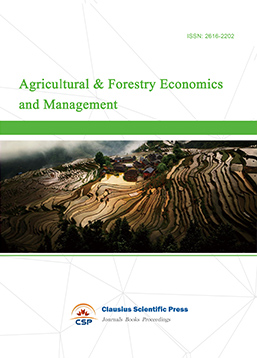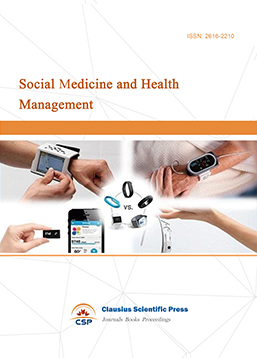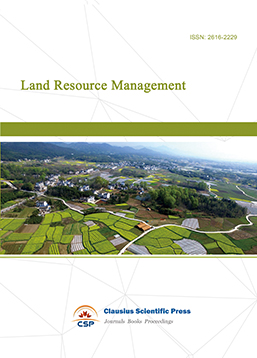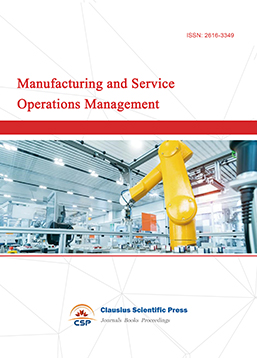Evolutionary Game Analysis of New Energy Vehicle Battery Swapping Station Construction in China under Low-Carbon Policies
DOI: 10.23977/ieim.2023.061019 | Downloads: 51 | Views: 1387
Author(s)
Yang Liu 1, Xianye Liu 1
Affiliation(s)
1 School of Business Administration, Guizhou University of Finance and Economics, Guiyang, Guizhou, 550025, China
Corresponding Author
Yang LiuABSTRACT
China's dual-point policy has been instrumental in promoting the new energy vehicle industry. However, the adoption of battery swapping stations in the battery-as-a-service (BaaS) model poses significant cost and implementation challenges. To address this, the government has extended its support to the BaaS model. This study employs an evolutionary game model involving new energy enterprises and local governments to assess the impact of the dual-point policy and BaaS model subsidy policy, while also considering the government's environmental concerns, including carbon emissions. The key findings are as follows: Firstly, solely implementing the dual-point policy proves insufficient for widespread BaaS model adoption. Secondly, exclusively implementing the subsidy policy for swapping stations may lead to subsidy fraud. Lastly, the combined effect of the dual-point policy and the BaaS model subsidy policy is positive. Lower subsidy rates and credit prices attract vehicle enterprises towards the BaaS model.
KEYWORDS
New Energy Vehicles, low carbon policy, carbon emission reduction, Battery-as-a-ServiceCITE THIS PAPER
Yang Liu, Xianye Liu, Evolutionary Game Analysis of New Energy Vehicle Battery Swapping Station Construction in China under Low-Carbon Policies. Industrial Engineering and Innovation Management (2023) Vol. 6: 147-154. DOI: http://dx.doi.org/10.23977/ieim.2023.061019.
REFERENCES
[1] Dong, F., Hua, Y. and Yu, B., "Peak Carbon Emissions in China: Status, Key Factors and Countermeasures—A Literature Review," Sustainability 10(8), 2895 (2018).
[2] Hao, H., Liu, Z., Zhao, F., Li, W. and Hang, W., "Scenario analysis of energy consumption and greenhouse gas emissions from China's passenger vehicles," Energy 91, 151–159 (2015).
[3] Gong, H., Shi, X. and Zou, X., "The Impact of China's New Energy Vehicles on the Realization of Carbon 'Zero-emission' and Future Trend Analysis:," presented at 2022 7th International Conference on Financial Innovation and Economic Development (ICFIED 2022), 2022, Zhuhai, China.
[4] Zhili, D., Boqiang, L. and Chunxu, G., "Development path of electric vehicles in China under environmental and energy security constraints," Resources, Conservation and Recycling 143, 17–26 (2019).
[5] Sarker, M. R., Pandzic, H. and Ortega-Vazquez, M. A., "Optimal Operation and Services Scheduling for an Electric Vehicle Battery Swapping Station," IEEE Trans. Power Syst. 30(2), 901–910 (2015).
[6] Adegbohun, F., Von Jouanne, A. and Lee, K., "Autonomous Battery Swapping System and Methodologies of Electric Vehicles," Energies 12(4), 667 (2019).
[7] Feng, Y. and Lu, X., "Construction Planning and Operation of Battery Swapping Stations for Electric Vehicles: A Literature Review," Energies 14(24), 8202 (2021).
[8] Keivanpour, S., Ait-Kadi, D. and Mascle, C., "Automobile manufacturers' strategic choice in applying green practices: joint application of evolutionary game theory and fuzzy rule-based approach," International Journal of Production Research 55(5), 1312–1335 (2017).
[9] Yuan, J.-H., Zhou, S., Peng, T.-D., Wang, G.-H. and Ou, X.-M., "Petroleum substitution, greenhouse gas emissions reduction and environmental benefits from the development of natural gas vehicles in China," Pet. Sci. 15(3), 644–656 (2018).
| Downloads: | 27006 |
|---|---|
| Visits: | 812400 |
Sponsors, Associates, and Links
-
Information Systems and Economics

-
Accounting, Auditing and Finance

-
Tourism Management and Technology Economy

-
Journal of Computational and Financial Econometrics

-
Financial Engineering and Risk Management

-
Accounting and Corporate Management

-
Social Security and Administration Management

-
Population, Resources & Environmental Economics

-
Statistics & Quantitative Economics

-
Agricultural & Forestry Economics and Management

-
Social Medicine and Health Management

-
Land Resource Management

-
Information, Library and Archival Science

-
Journal of Human Resource Development

-
Manufacturing and Service Operations Management

-
Operational Research and Cybernetics


 Download as PDF
Download as PDF